3.2 Understanding How Cameras Work
3.2.5 The Lenses
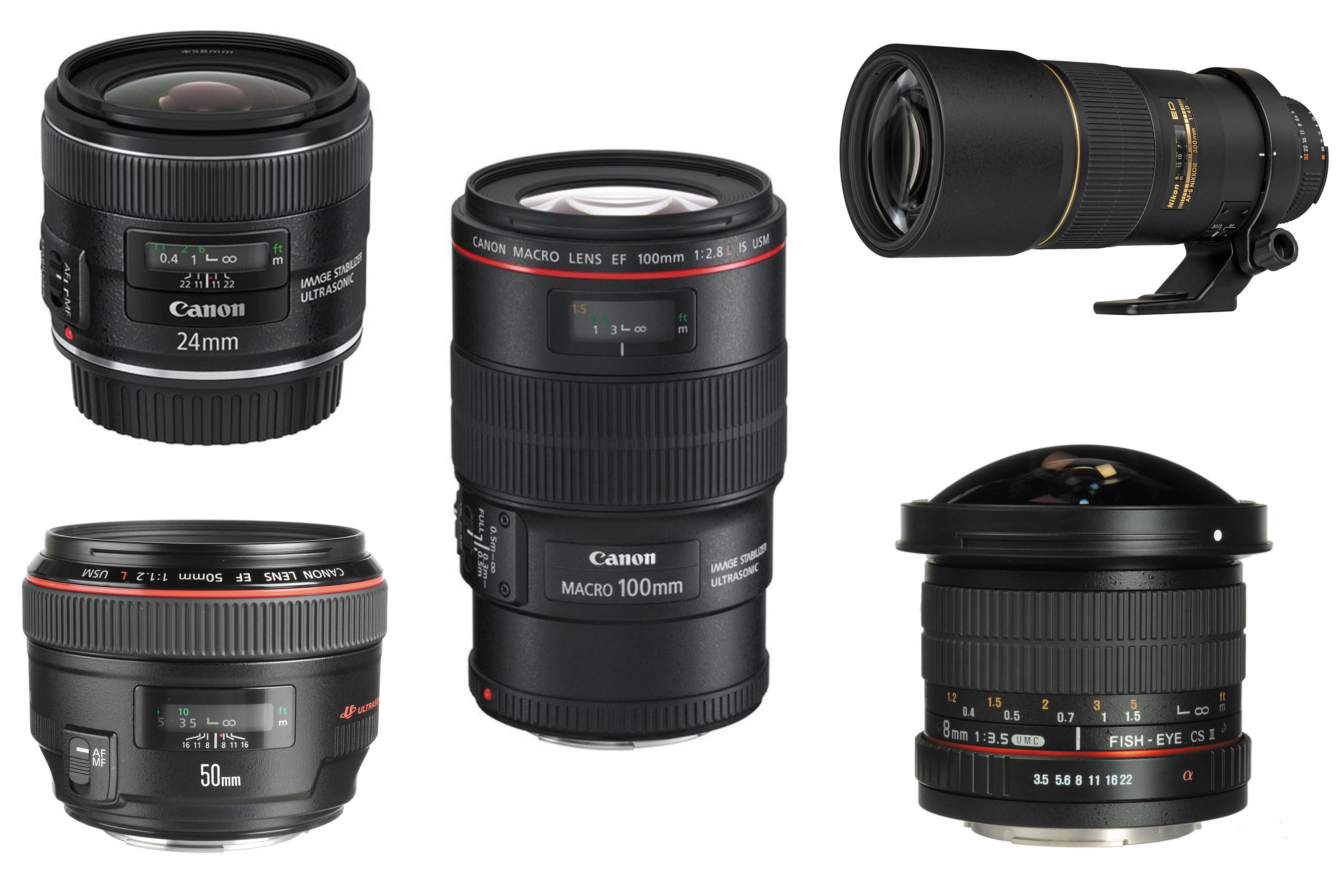 |
|
Camera Lenses |
The most important element of a camera is the Lens. As we saw in the lesson 'From to the World to the Sensor', it is the lens (and your use of it) that determines the quality of the image. This lesson will briefly touch upon the different types of camera lenses, since you will have to choose the right type for the computational imaging task you will need to perform. Certain tasks may require a steady focal length for the whole dataset, and thus it may be better to use a lens with a fixed focal length over one with a variable focal length. We will cover these in more detail below.
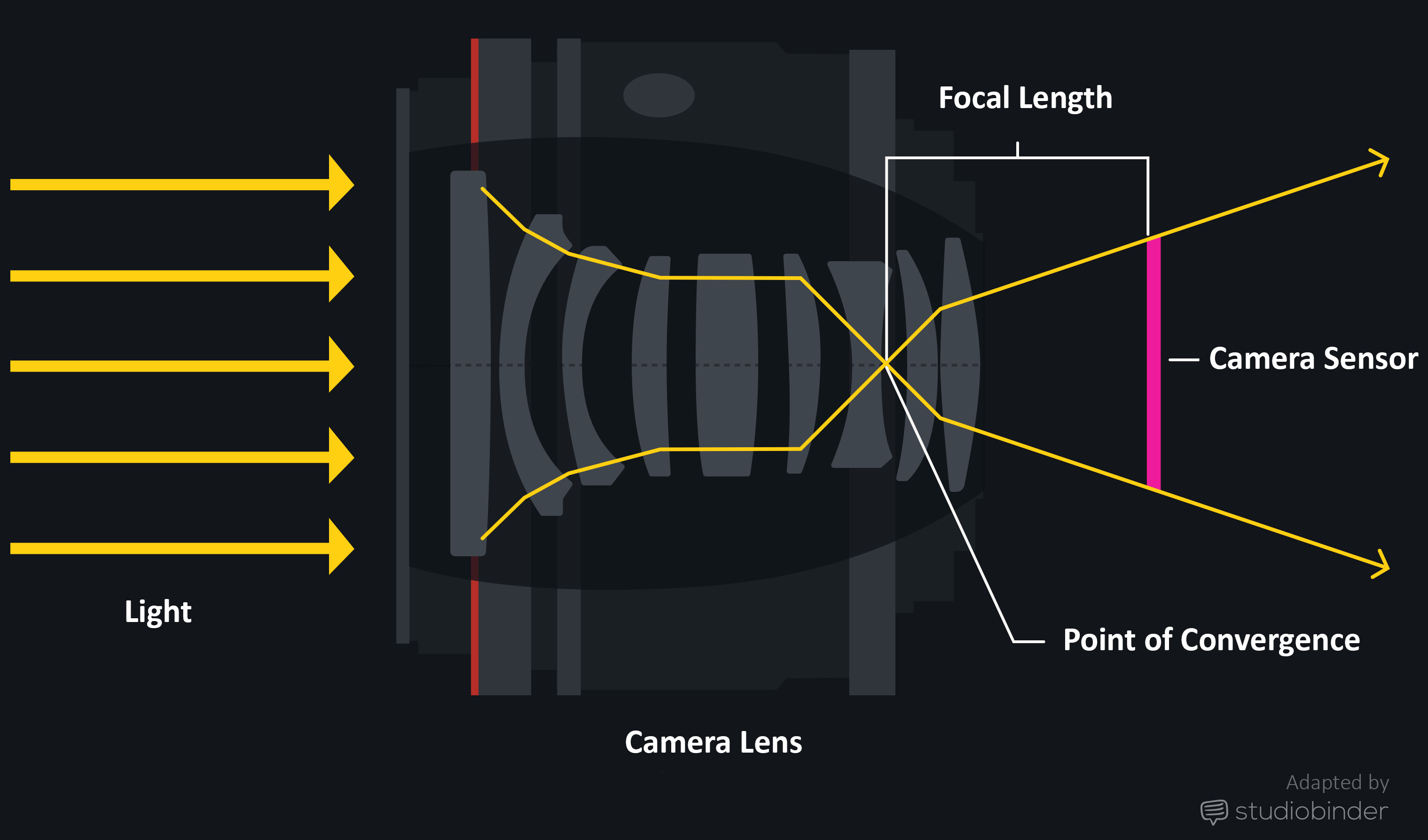 |
|
Focal Length |
The first thing that you need to become familiar with, is the term Focal Length; the number that defines the distance in millimetres, between the point of convergence of the lens and the camera sensor. This number indicates how much of the scene the camera will be able to capture, the angle of view, and how large the subject will appear. The lower the number, the wider the field of view, and the lower the magnification, which means that the camera can capture more of our scene. Lenses have different focal lengths, which means that some lenses can get into a photo more than others. This was not the case with film photography, in which all cameras used a 35mm film. In digital photography, 50mm focal length lenses are considered the standard.
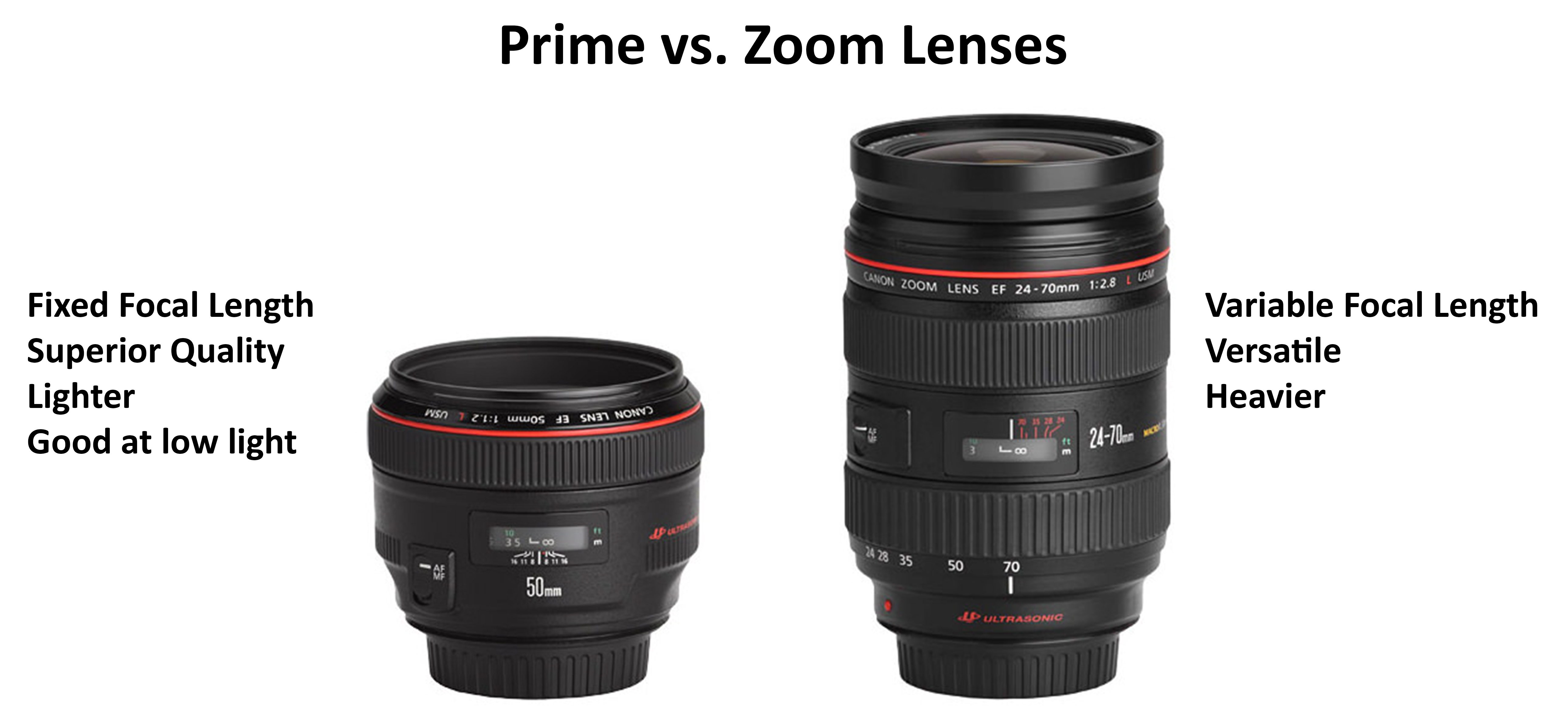 |
|
Prime (on the left) & Zoom (on the right) |
There are two basic categories of lenses: Prime Lenses and Zoom Lenses. Prime lenses have a fixed focal length, which means that the angle of view cannot be changed unless you move closer or further from the subject. Although this makes them less flexible for different subjects (meaning that you may need to carry multiple prime lenses depending on the subjects you want to photograph), they are typically fast and sharp. They are also smaller, and thus lighter. Most importantly, prime lenses perform really well under low light conditions since they can reach an aperture of f/2.0 or even f/1.2. On the other hand, the main advantage of Zoom lenses is that they are extremely versatile, as one lens can accommodate diverse photographing situations by moving from a wide to a very narrow focal length. Due to this versatility, sometimes they are more expensive than prime lens and at the same time they cannot perform equally well in all different conditions, e.g. scenes with low light.
Within Prime and Zoom types of lenses, there is a variety of lenses with different focal lengths for different situations:
- Ultrawide and Fisheye lenses (8mm-24mm). These have a very wide angle of view and they are better suited for large scenes, e.g. a landscape. Their wide angle often distorts the subjects and for this reason they are not suitable for portrait photography or small objects. Fisheye lenses can capture a full 180 degrees radius.
- Wide angle lenses (24mm-35mm). These have the same characteristics as the ultrawide lenses, however, distortion does not always become apparent. It is not good practice to use wide angle lenses for computational imaging applications as you will need to correct the distortion in the post-processing stage, therefore adding another level of complexity in the process.
- Standard lenses (35mm-70mm). They reproduce what our eyes see and are the easiest to handle as they can accommodate different types of photography. A (prime) standard lens is suitable for computational imaging applications, where you do not need the extreme detail that a Macro lens can capture.
- Macro lenses (100mm-200mm). They are used for close-up photography since they are capable of producing very sharp images at a reproduction ratio of at least 1:1 (life size). Macro lenses can even go higher (ratio of 5:1) for extreme close up and minute details. A macro lens is ideal for small object photography.
- Telephoto lenses (70mm-300mm/ Super Telephoto lenses | over 300mm). They are suited for photographing distant subjects (e.g. wild life) but are also used in portrait photography due to the effect they create.
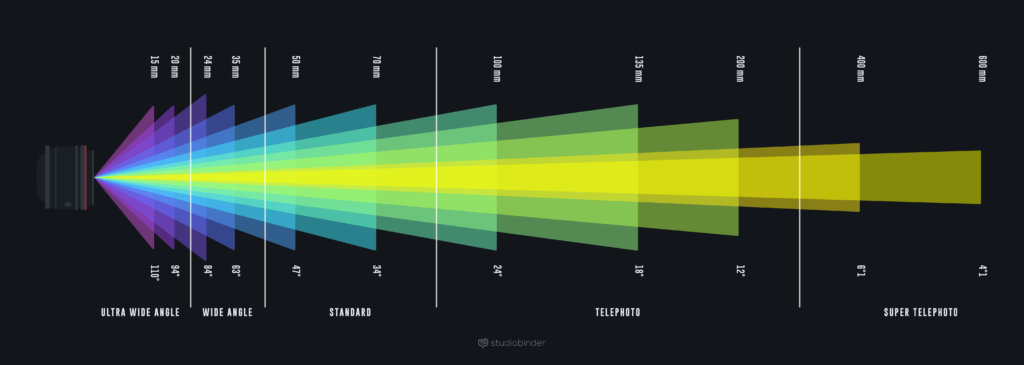 |
|
Focal Length - Field of View Exposure Modes (Click to enlarge the figure) |
In the image below you can see an example of the same subject photographed with different focal length but from the same distance. The 50mm focal length is closer to what our eyes would see, whereas the 14mm focal length has a far wider angle of view that captures larger part of the subject.
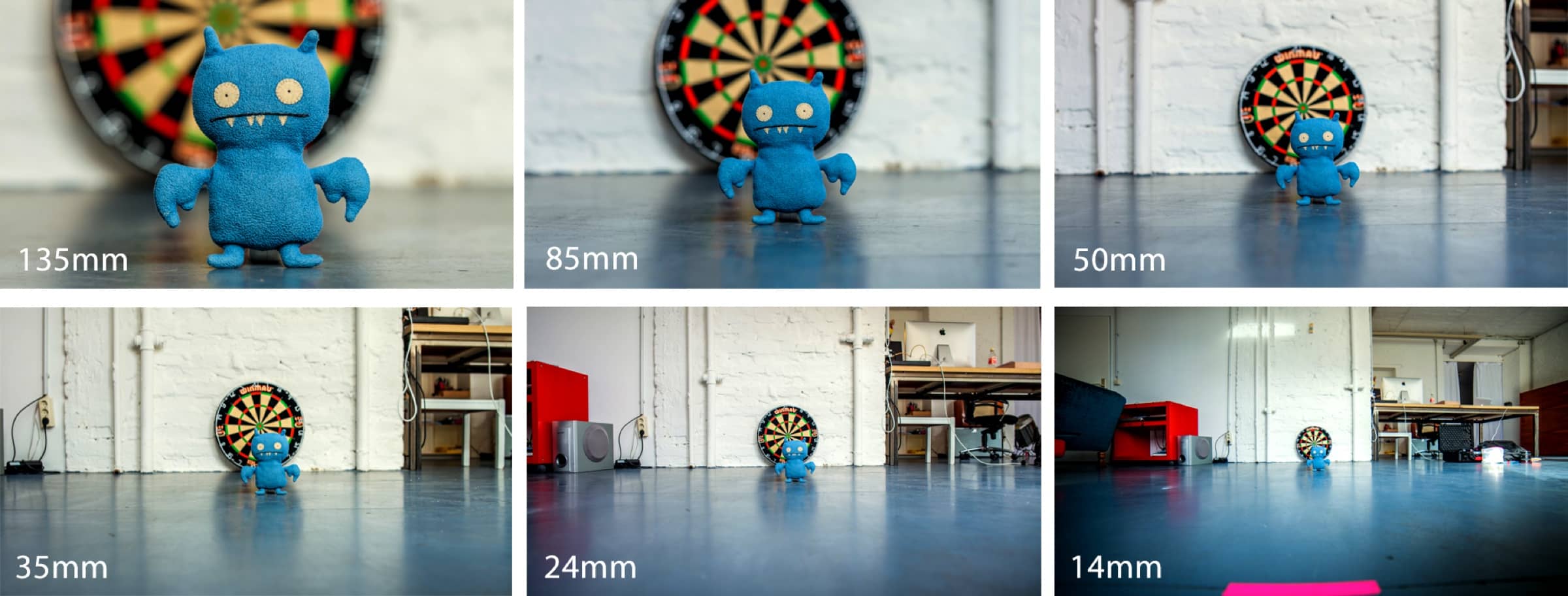 |
|
Focal Length Distance Exposure Modes (Click to enlarge the figure) |
Further Readings/Additional Resources
- What Are Prime, Zoom, Fix Aperture, Variable Aperture Lenses | Photography 101 Lenses: https://youtu.be/Lep-YZtAZ20
- The ULTIMATE Introduction to Camera Lenses: https://youtu.be/oPJAgeGqrlg

